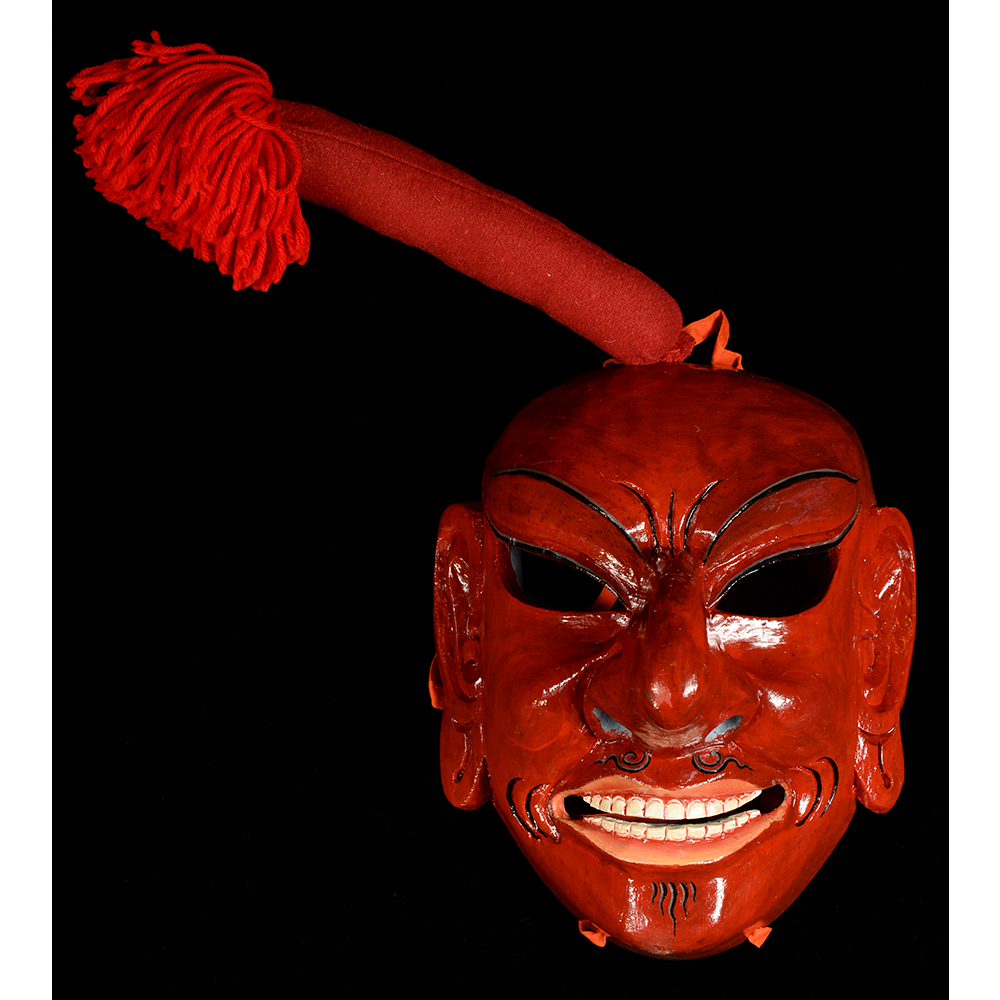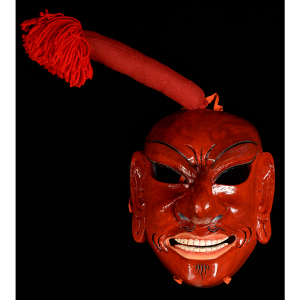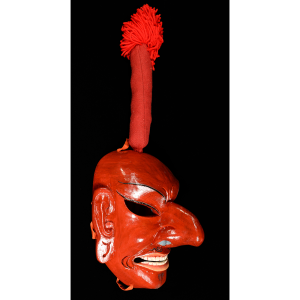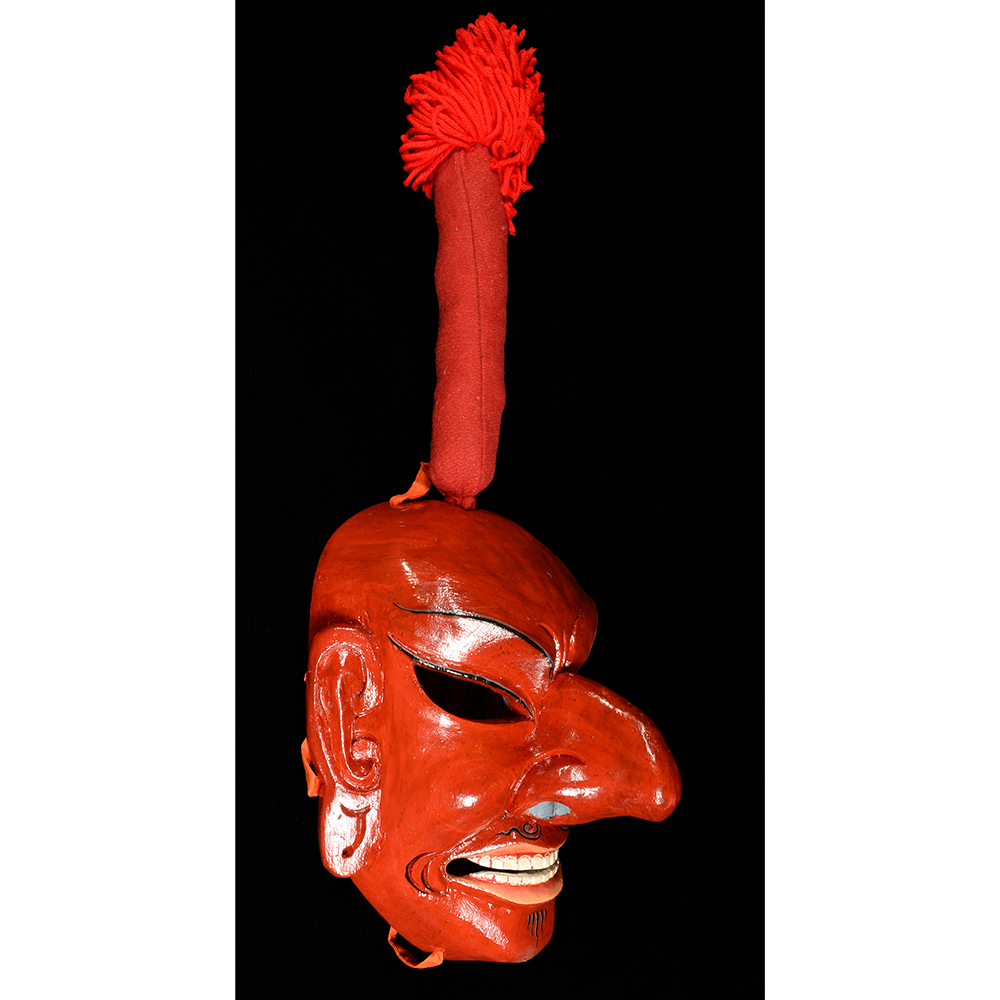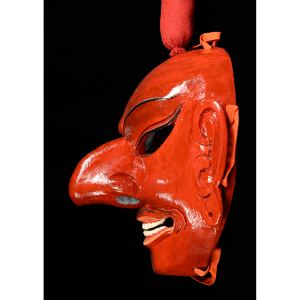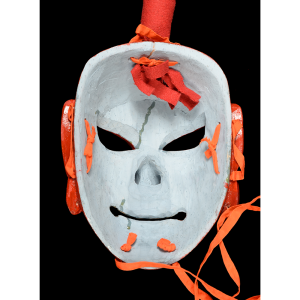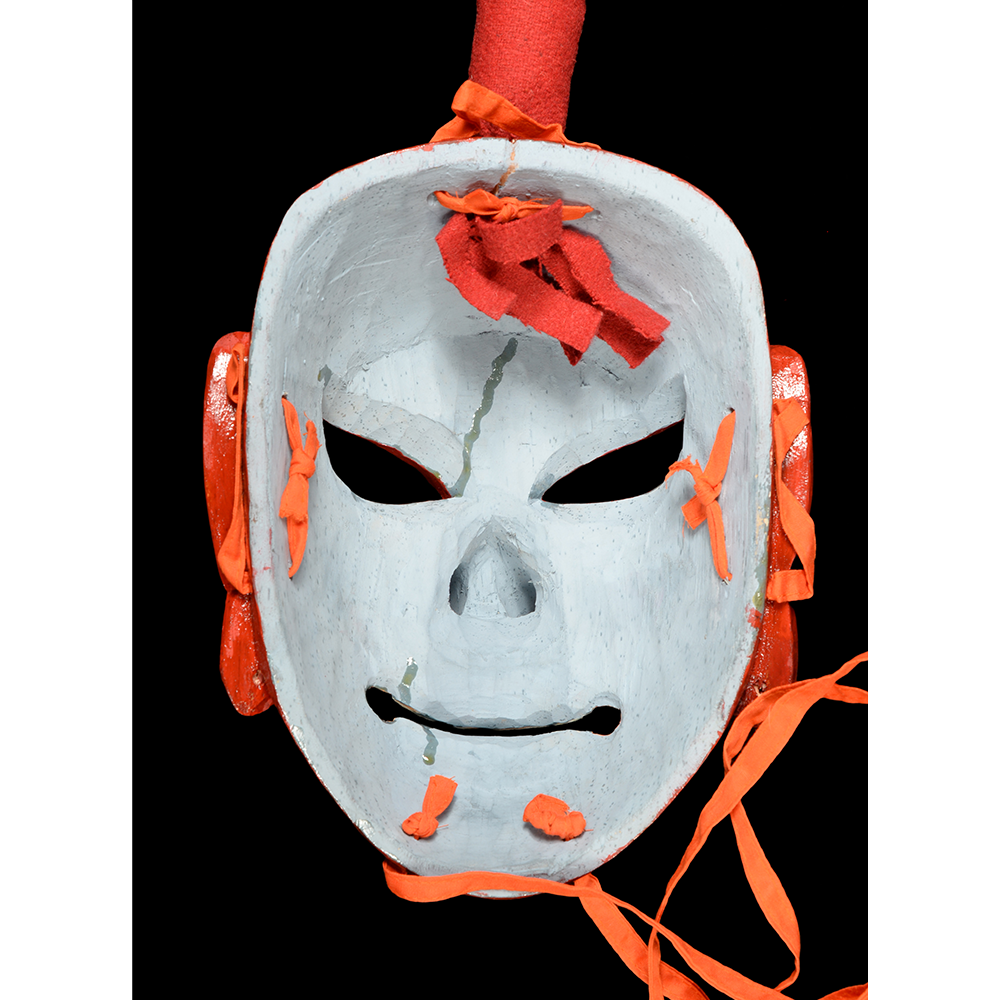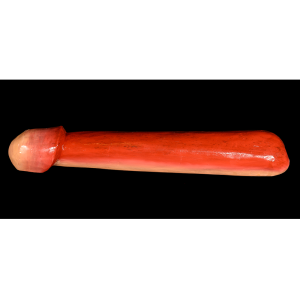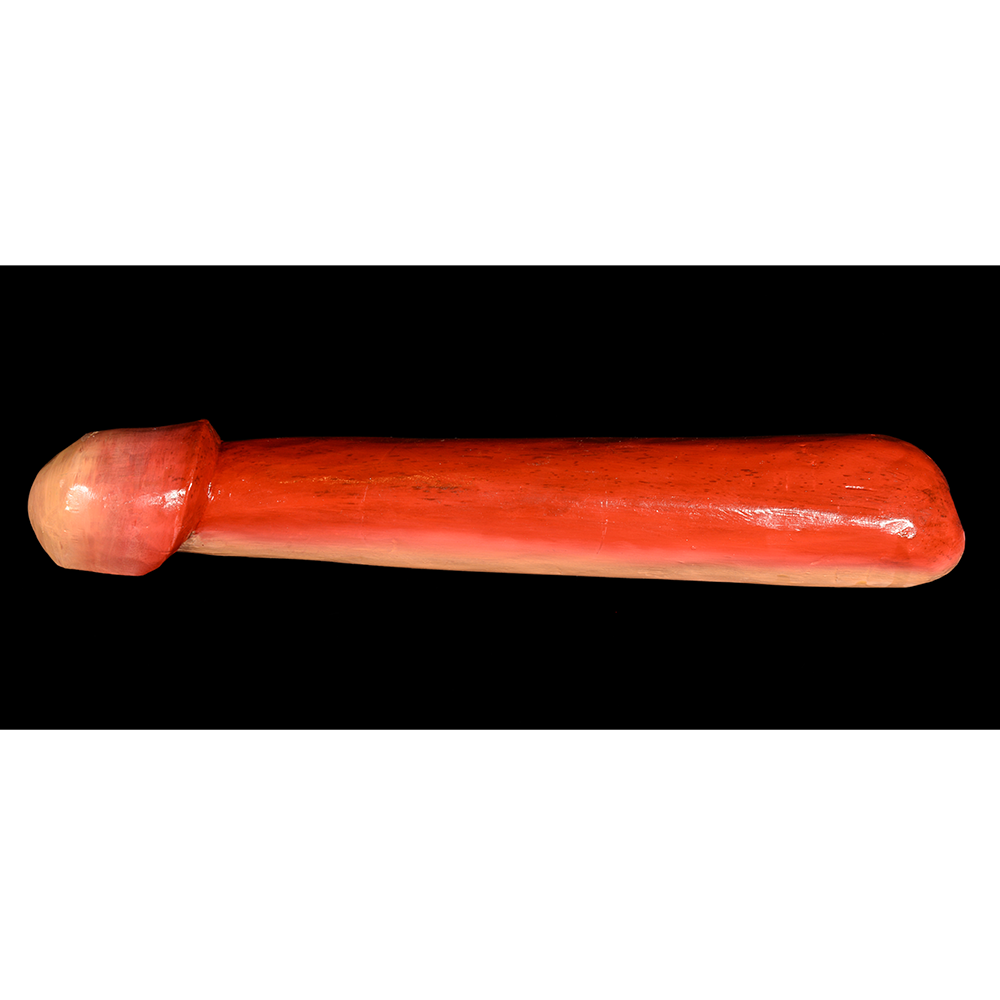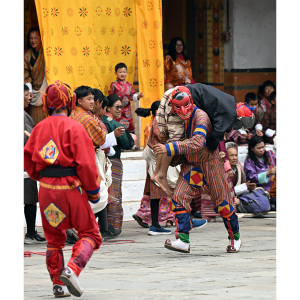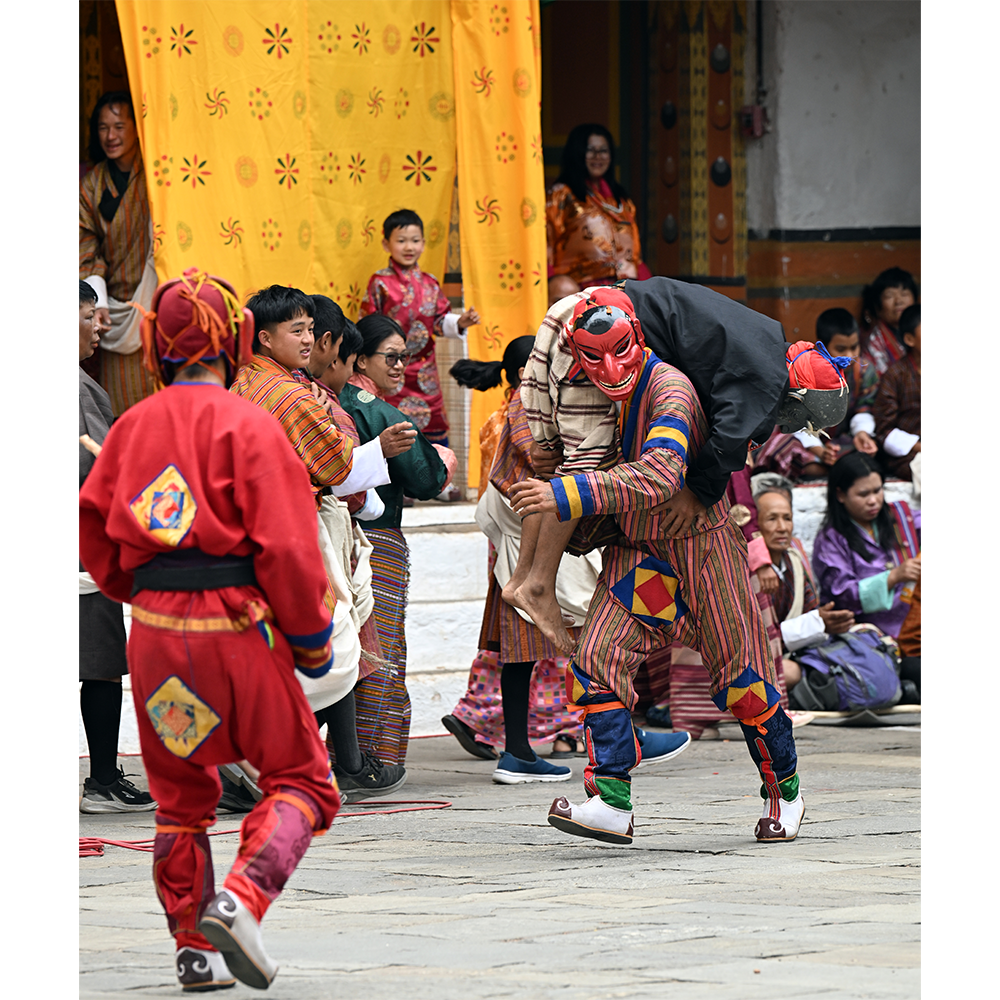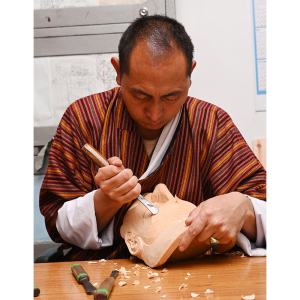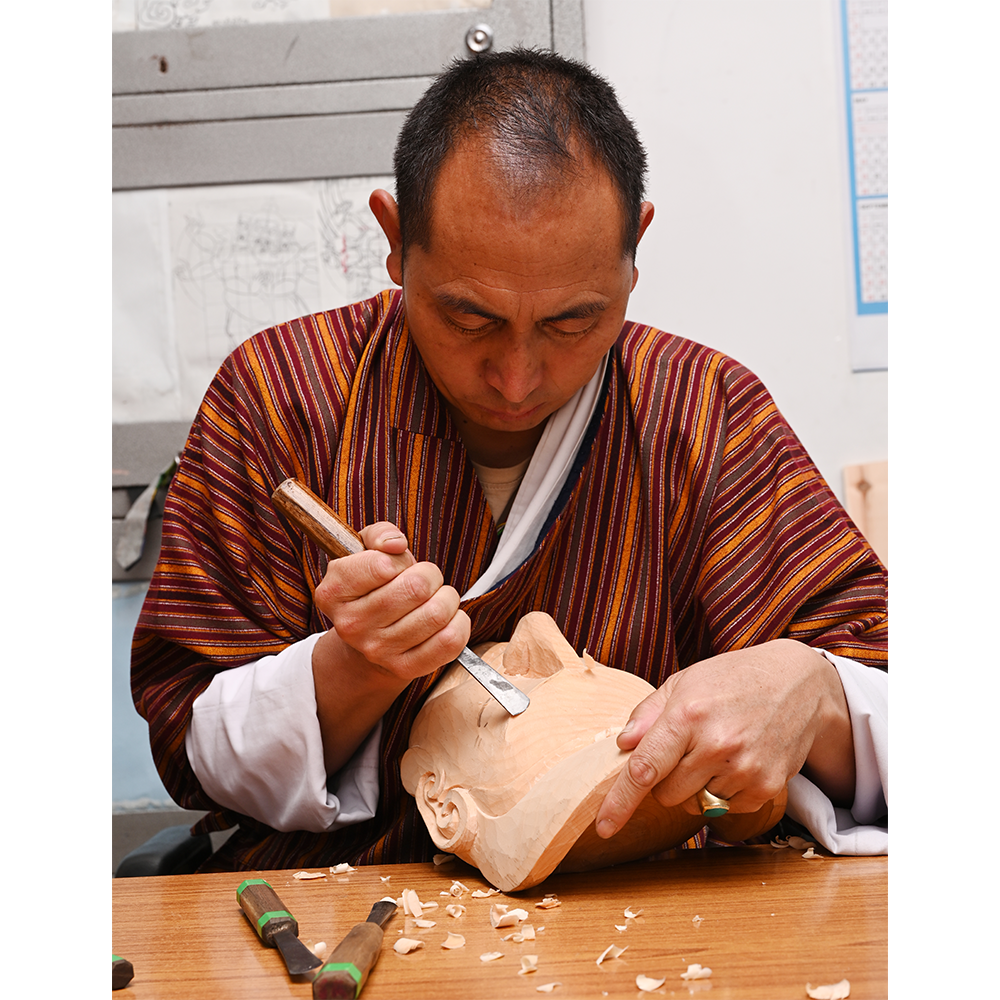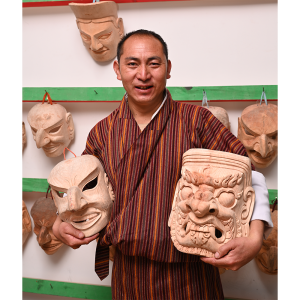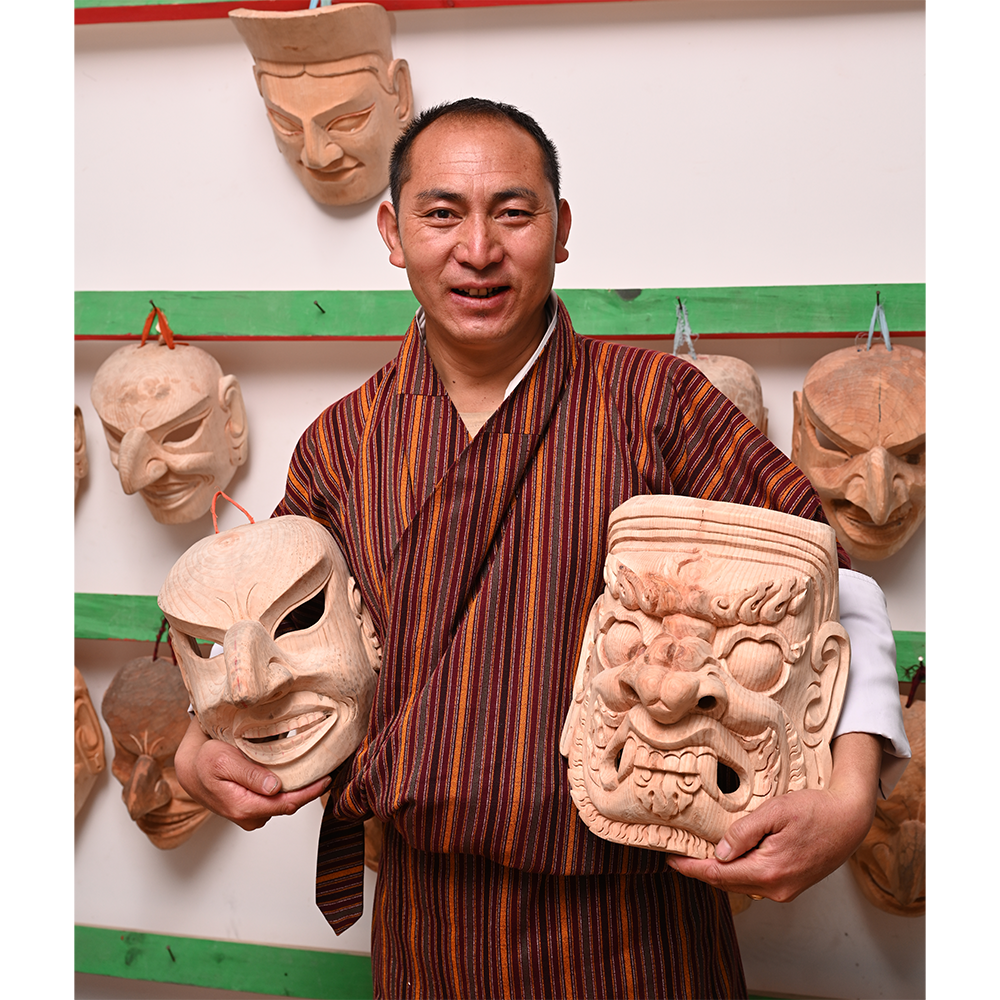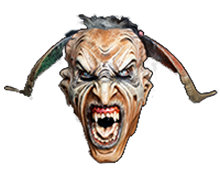TITLE: Atsara Mask and Phallus
TYPE: face mask; accessory
GENERAL REGION: Asia
COUNTRY: Bhutan
SUBREGION: N/A
ETHNICITY: Ngalop
DESCRIPTION: Atsara (Teacher) Mask
CATALOG ID: ASBT006
MAKER: Carver: Passang Dorji (Paro, 1981- ); Painter: Tashi Phuntsho (Lhuentse, 1990- )
CEREMONY: Cham Dance
FUNCTION: Celebration; Entertainment; Social Control
AGE: 2025
MAIN MATERIAL: blue pine wood
OTHER MATERIALS: mineral paint; lacquer; cotton cloth; wool cloth; wool batting; thread
The Ngalop people inhabit western and central Bhutan and are originally of Tibetan origin. The ethnic group includes an estimated 710,000 persons. The Ngalop are primarily Tibetan Buddhist, and their masks are typically worn at monastery celebrations known as Cham Dances to bless the sowing of the grain, pray for a bountiful harvest, and entertain the public.
The atsara, also transliterated acharya, mask is present at nearly all all festivals and throughout the festival. The character plays multiple roles. Most of the time, the atsara is a jester, making jokes and playing tricks, often in small groups, entertaining the audience with bawdy humor. For this purpose, the atsara usually carries an oversized wooden phallus, which he especially uses to tease women young and old. In addition, in some plays, such as the Pholey Moley, the atsara is a dramatic character. Even here, the atsara usually plays a comedic role, relentlessly making sexual innuendos to the audience, other masked characters, and even each other. There are several kinds of atsara, each of which wears a different type of mask, some white, others black, but most commonly red. What all atsara have in common is their status as “teachers,” meaning masters of Vajrayana Buddhist practice. While religious enlightenment may seem inconsistent with bawdy humor, the atsara is also a kind of master of ceremonies, assisting other characters and passing on wisdom in the guise of ribaldry.
For more on the masked festivals of Bhutan, see Kezang Namgay, Sacred Dances of Bhutan (self-pub., 2d ed., 2017), and, with regard specifically to the traditions of Bumthang, Yonten Dargye, Festivals of Bumthang Dzongkhag (Thimpu: Research & Media Division, National Library & Archives of Bhutan/Tshangpa Press, 2018).
